
|
What is Marine Debris? |
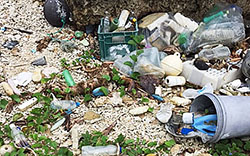 |
| |
Marine = ocean / sea
Debris = trash |
| |
Marine Debris is any trash that ends up in the ocean. |
| Marine Debris washed on a beach |

|
Why is there trash in the ocean and how did it get there? |
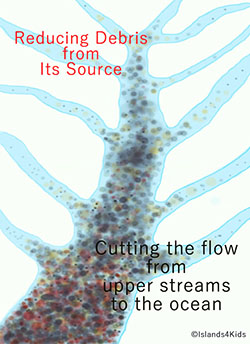 |
| |
People are responsible for Marine Debris.
When people mishandle of trash, they find their way into the ocean, where it becomes Marine Debris. When people litter on the streets or anywhere they go, that trash may end up in the drains by rain or wind, where they may eventually end up flowing into the ocean. |
| |
|
| |
Rivers and Streams: Some trash are dumped directly into rivers or streams, which can flow into larger bodies of water, such as the ocean.
Other trash that may be littered on the side of the road or even up in the mountains can be carried to the nearest river system by rain, wind, or flood, which may also flow into the ocean to become Marine Debris. |
| |
|
| |
Oceans and Beaches: Some people who live near the ocean may discard old or broken items such as TVs, refrigerators, or daily trash into the ocean illegally, out of convenience or because there is no appropriate place of disposal nearby.
Beach goers and families who go to the beach for fun may leave toys (beach balls, buckets, shovels, etc.), food wrappers, drink bottles, and other items that can end up in the ocean.
|
| |
|
| |
Derelict Fishing Gear: Any fishing gears, like fishing nets, fishing lines, ropes, crab cages, etc. that are abandoned in the ocean are known as derelict fishing gear.
Out at sea, fisherman may leave or dump their old and broken fishing equipment in the ocean. Othertimes, nets and fishing lines get stuck on rocks and corals at the bottom of the ocean, so fishermen are unable to pull it back up and collect them. |
| |
These fishing nets that are abondoned in the ocean are called "ghost nets". |
|
| |
| |

|
What kind of trash become Marine Debris? |
| |
All the trash that doesn't belong to the ocean becomes Marine Debris. |
| |
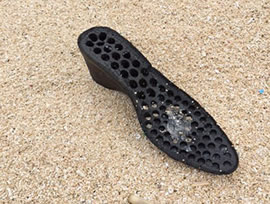 |
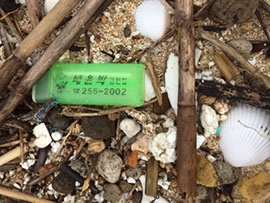 |
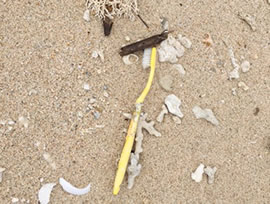 |
| plastic shoe sole |
lighter |
toosh brush |
|
| |
|
Some Marine Debris, like food waste or paper, are able to degrade (break down chemically) and disappear within a short period of time.
Other debris, like glass bottles, tin cans, and fishing lines, take a very long time to break down and can take several hundred years to degrade.
Many plastic debris that are created using human-engineered materials like nylon, polyethylene, and polypropylene, take an especially long time and may not even degrade completely.
Without being able to degrade, they may stay in the ocean forever, unless they are removed by people or marine animals. Take a look at the chart below to see roughly how long it takes for different items to biodrade. |
| |
 |
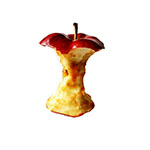 |
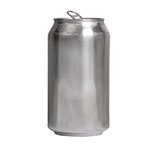 |
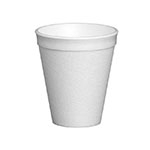 |
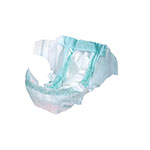 |
Apple core
2 months |
Aluminum
200 years |
Foam cup
50 years |
Disposable diaper
450 years |
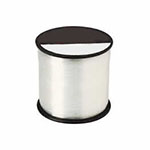 |
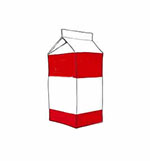 |
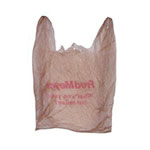 |
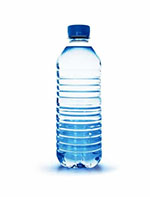 |
Fishing line (microfilament)
600 years |
Waxed milk carton
3 months |
Shopping bag
1-20 years |
Plastic bottle
450 years |
|
 |
| |

|
So, is Marine Debris bad? |
| |
Marine Debris is bad for marine animals, people, and the ocean environment. |
| |

|
What are marine animals? |
| |
Marine animals are animals that live in the ocean like fish, dolphins, seals, and sea tutles. They are also animals that live near the ocean like sea gulls and albatrosses that rely on the ocean for their source of food. |
| |

|
What do Marine Debris do to marine animals? |
|
When plastic bags are suspended in the water, they look like jellyfish to animals like sea turtles. Sea turtles mistakenly eat these plastic bags, thinking it is their favorite jellyfish to eat.
The plastic bags clog their intestines and trick their bodies into thinking they are full. This makes sea turtles stop eating the food they need, so they die from poor nutrition. |
| |
| |
Marine animals like seals, turtles, and seabirds get tangled or chocked by fishing nets, ropes, and fishing lines. They can't move, so they die from starvation or lack of oxygen. This can happen when the debris are in the water or on the shore by the ocean. |
| |
| |
Mother albatorosses mistakenly feed plastics to their chicks and eat plastics themselves, thinking it is food. When the only thing that fills their stomachs are plastics, both adult albatross and chicks do not get enough nutrition to grow and fly. |
| |
| |
When fish, whales, and other marine animals gulp seawater, they sometimes end up taking in small plastic pieces as well. |
| |
| |
|
| Photo courtesy: NOAA (The National Oceanic and Atmospheric Administration) |

|
What Marine Debris does to human? |
| |
People can get sick from eating fish that eat plastics. When we eat fish that eat plastics, those debris can end up in our stomachs as well. As more fish consume more plastic debris, we will need to be more careful about eating seafood. |
| |
| |
It is not safe for people to play on the beach or swim in the ocean with Marine Debris. Some debris are very sharp, such as broken glass pieces or injection needles that anyone on the ocean can step or fall on.
Other debris might have chemicals or other unknown liquids in or on them that can be harmful to people. |
| |
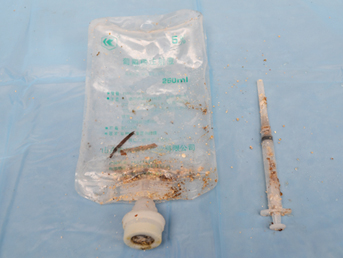 |
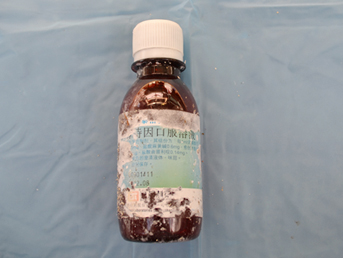 |
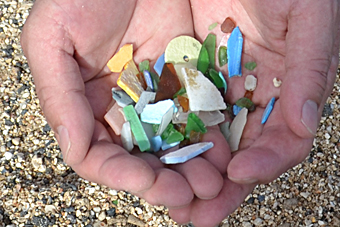 |
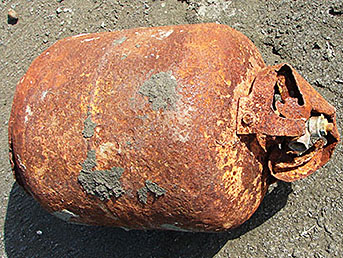 |
| drip bag & injection needle |
medicine bottle |
plastics & glass pieces |
propane gas tank |
|
| |
| |
We cannot safely enjoy and watch the beautiful ocean because of Marine Debris. |
 |
| |

|
What Marine Debris does to the ocean environment? |
| |
Because Marine Debris is increasing rapidly every year and is becoming a part of the marine environment. |
| |
Many marine creatures are using marine debris as shelter and are living in them. This makes it hard to clean up marine debris because of the small creatures that will also be removed from their environment. |
| |
|
| |

|
Why is Marine Debris everyone's problem? |
| |
Everyday, all over the world, people are making so much trash in their daily lives. |
| |
There is so much trash being produced at such a fast pace that trash disposal systems cannot keep up to take care of them all. |
| |
| |
Once in ocean, trash is carried by ocean currents and can travel from one country to coastlines and beaches of another country across the world.
By ocean currents, some marine debirs travel thousands of miles away from the original countries where they are thrown. |
| |

|
What can we do to stop Marine Debris? |
| |
(1) Don't litter
(2) Pick up trash in your neighborhood or participate in beach, street, or river clean-ups in your community!
(3) Try to make less trash in your life by following 3R's. |
| |
| |
3R's:
Reduce (Don't buy unnecessary products)
Reuse (Try to use things that can still be used or give them to someone who can)
Recycle (Recycle things that can be turned into different products, look for a recycle bins). |
| |
|
| |
(4) Tell your friends and families about Marine Debris and the 3R's. |
| |
 |
| |
|
| |
 |
| |
Reading Room |
|